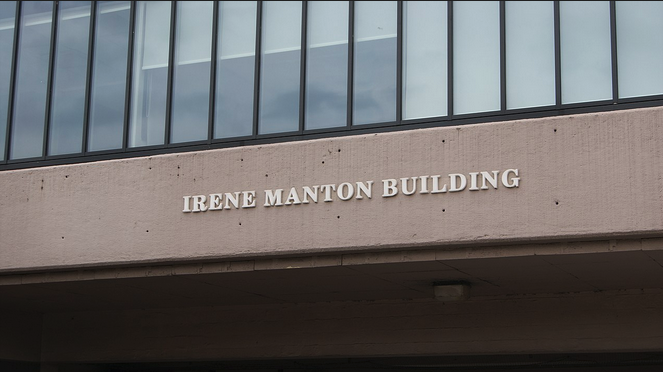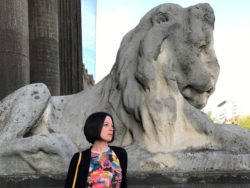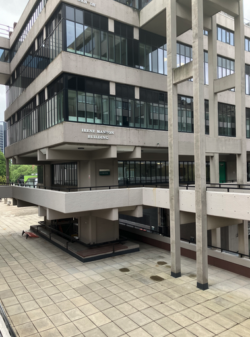
Irene Manton Building, University of Leeds
This summer I’m lucky enough to have a Brotherton Fellowship, which is giving me the opportunity to spend lots of time in Special Collections at Leeds University Library. My focus is on the ground-breaking botanist Irene Manton (1904-1988), whose archives are kept at Leeds, and in particular her small collection of antiquities, now at the Peter Scott Gallery in Lancaster.
Manton is best known for her pioneering work in electron microscopy, producing images of plant cell structures which had never been seen before. She spent most of her working life at Leeds, and her memory is preserved on campus in a plaque on Botany House and in the Irene Manton Building, typical of the University’s Brutalist architecture.
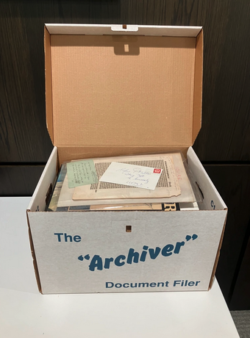
One of the many boxes in the Irene Manton Archive. Leeds University Library Special Collections
Attention has also been paid, particularly in recent years, to Manton’s significant collection of modern art, put together over the course of
her career, which she used in teaching undergraduate students. She was interested in helping undergraduate students to get a handle on abstract art, and also made friends with artists whose work she admired. My aim is to build on this to explore Manton’s collection of antiquities; how she came by them, what they meant to her, and how she understood and used them. Fortunately I have a lot of archival material to work with, though some major sifting has been required!
With the help of colleagues from the Leeds Arts and Humanities Research Institute and from Special Collections, who are expert in Manton’s work and her archives, I’ve been able to target my investigation on the most likely boxes from the several hundred which form the collection, many of which are filled with electron microscope images. This still requires working through thousands of pieces of paper, but I’ve been able to find some promising leads – from letters, to art gallery receipts, to enquiries sent to the British Museum. Manton’s work permeated every aspect of her life, so that her scientific and personal papers are largely intermingled, and she appears never to have thrown a piece of paper away – an excellent habit in a research subject, though it creates some headaches for archivists.
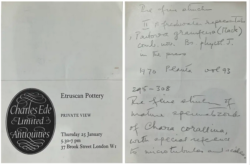
Invitation to Etruscan Pottery private view, with scientific references on the back.
It’s a real luxury to have the opportunity to spend quality time in an archive like this, as usually my archive visits are more fleeting, and I have to be very focused in what I examine. Working my way through years worth of material has given me the chance to get a sense of Manton’s voice and personality, and fortunately she is great company; I wish it could have been possible for me to meet her. I hope that through this project I’ll be able to add to scholarship on her intellectual approach to topics beyond her primary academic interests, and also to further my research on the complex and varied itineraries of Cypriot antiquities in the UK.

